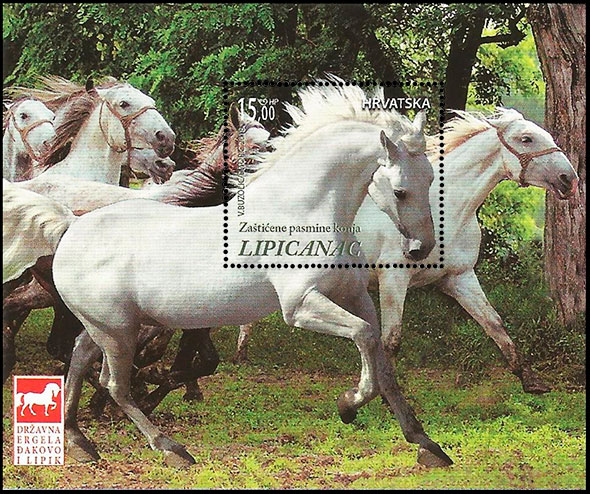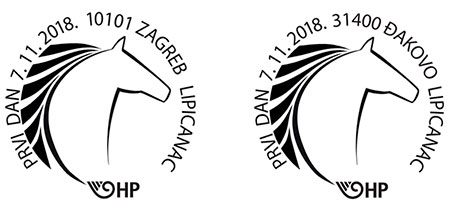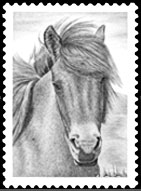
On November 7, 2018, the Croatian Post issued a souvenir sheet depicting horses of the Lipizzan breed.
The Lipizzan horse dates back to the stud farm Lipizza in Slovenia in 1580, which, at the time, served as the Austrian Court’s stud farm. The Lipizzan is a resilient and enduring horse, appropriate for riding and carriage pulling, predominantly not taller than 160 cm, and known for its benign temperament.
Lipizzan The white horse, the “baroque” stud, often called the “white pearl”, joyful and beautiful, gracefully built, with a proud stature and light step, will always find attention from spectators. The Lipizzan horse dates back to the stud farm Lipizza in Slovenia in 1580, which, at the time, served as the Austrian Court’s stud farm. The Lipizzan is a resilient and enduring horse, appropriate for riding and carriage pulling, predominantly not taller than 160 cm, and known for its benign temperament. It has a proportionally large and dry head, wide forehead, tall and nicely curved long neck, low and slightly exposed withers, long and wide body, good back and round croup with a high dock. Its chest is wide and deep, legs are firm, bony and strong with clearly exposed tendons. The Lipizzaner’s step is large, gracious and tall. They are mostly grey, with the exception of the more rare bay and black variety. It is interesting to note that Lipizzaners are never born white - the foals are always dark, and they get whiter as they age. From the very beginning, Lipizzaner breeding was done through stallion lines and mare families. Today, eight stallion lines and 65 mare families are recognised. The stallion lines are Conversano, Favory, Maestoso, Neapolitano, Pluto, Siglavy, Tulipan and Incitato. The mare families are classified according to the country of origin, so, according to international classification, one stallion line and 16 mare families are recognised as “Croatian”. The Croatian stallion line is called Tulipan and it was created in Terezovac (today’s Suhopolje). Of the 16 Croatian mare families, five were created in Vukovar (Rendes, Hamad-Flora, Eljen-Odaliska, Miss Wood and Frušak), three in Cabuna (Traviata, Margit and Manczi), one in Daruvar (Wanda), three in Đakovo (Liza, Karolina and Munja), three in Terezovac i.e. Suhopolje (Ercel, Cirka and 502 Mozsgo Perla), and one family of Rebecca – Thais in Vrbik (Thais).
Today, Lipizzaner breeding in the Republic of Croatia is related to the State Stud Farms Đakovo and Lipik which comprise the core of the breeding, by selecting and maintaining the breeds, and mostly for Slavonia, where private “home” breeding lives in synergy with country life and customs in all kinds of events, as well as sports competitions in horseback and carriage riding.
It is particularly for this synergy between the life of man and Lipizzaner that the 2017 decision of the Croatian Ministry of Culture proclaimed the Lipizzaner breeding tradition in Slavonia, Baranja and Srijem as an intangible cultural heritage, adding it to the Register of Cultural Goods of the Republic of Croatia - List of protected cultural goods.

Перейти в каталог


